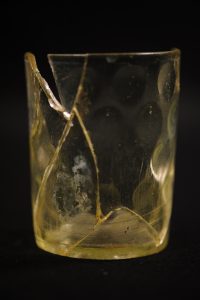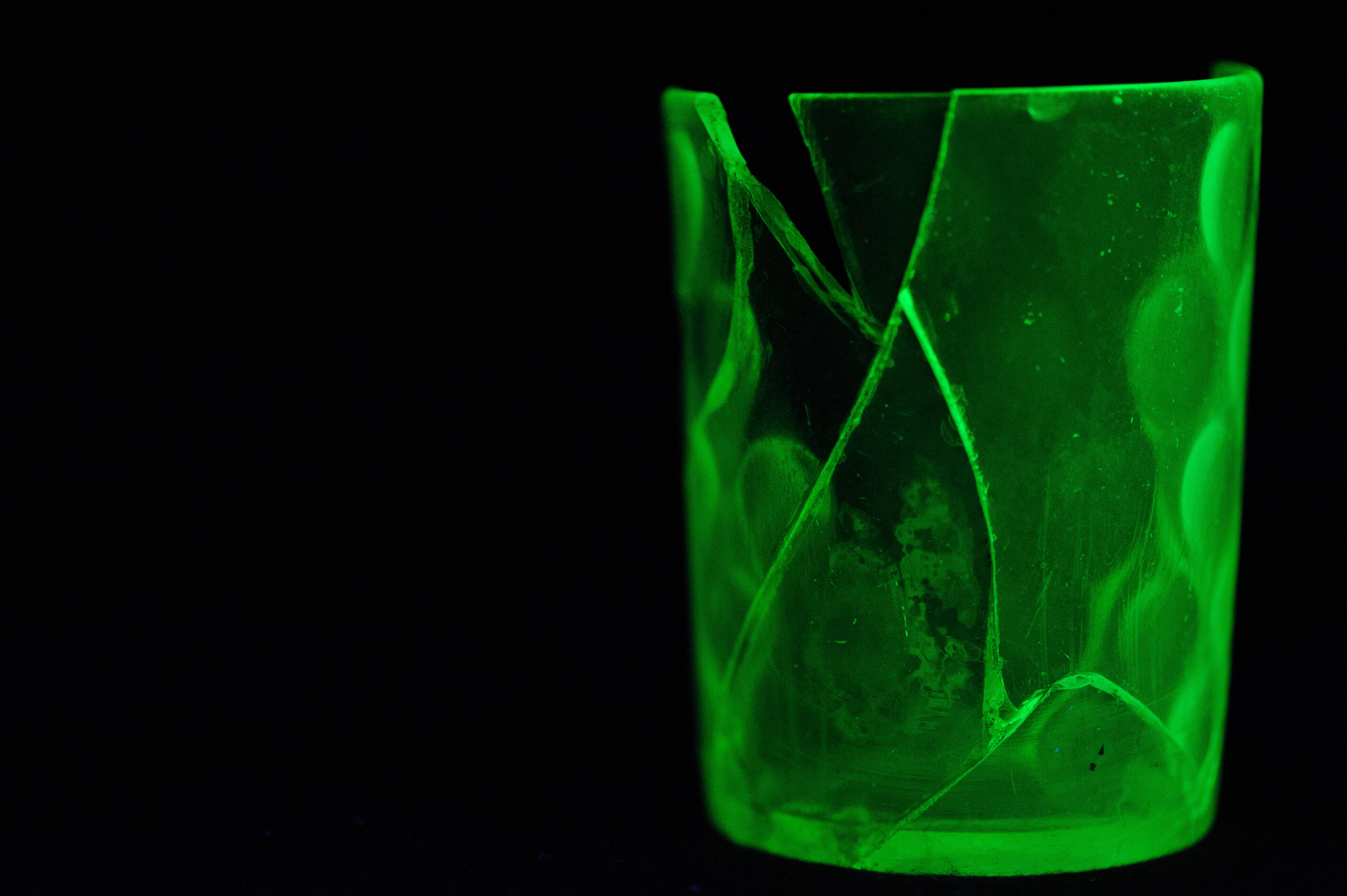
A uranium glass tumbler was recovered by the Office of Archaeological Research during excavations in downtown Tuscaloosa in 2013. Uranium was first used to color glass in the 1830s, and (except when uranium stocks were directed to the war effort in the 1940s) uranium glassware continued to be produced into the 1970s. Also known to collectors as “Vaseline glass” or “canary glass,” the uranium in the mix causes the glass to fluoresce bright green under black light, as shown here.
The tumbler was found in the remnants of an early 20th century privy, or outhouse. Privies are an important archaeological feature, since during their use-life they not only serve as an area for the disposal of human waste, but as a refuse receptacle, gathering all manner of objects deemed trash by the people of the time, but important to archaeologists as windows into the domestic lives and material culture of those past societies.
The Archaeological Collection holds more than 1 million artifacts, associated documents and photographic images documenting the history of human occupation in the southeastern United States and beyond. Artifacts from Moundville Archaeological Park, the site of one of the largest prehistoric Native American settlements in North America, form a major part of the collection. The collection is housed at the Erskine Ramsay Archaeological Repository, and supports collection–based research both at home and abroad by students, academics and professionals.
WIlliam R. Allen, archaeology collections manager for The University of Alabama Museums, provided the above information.
